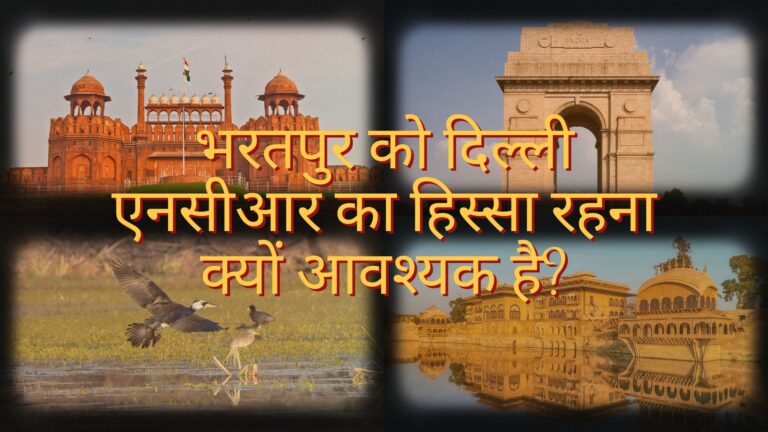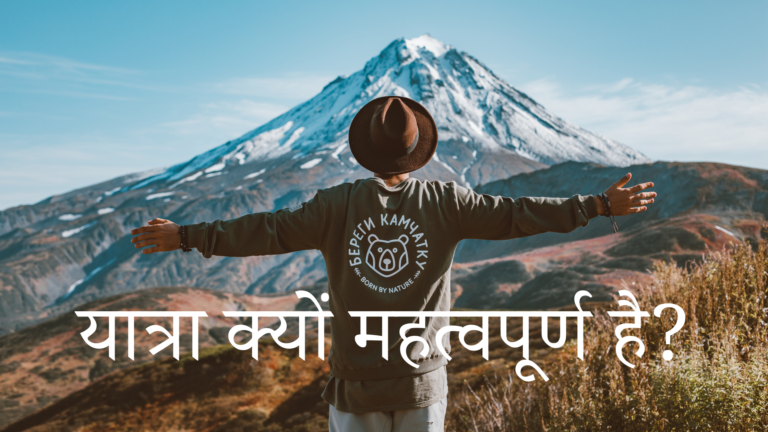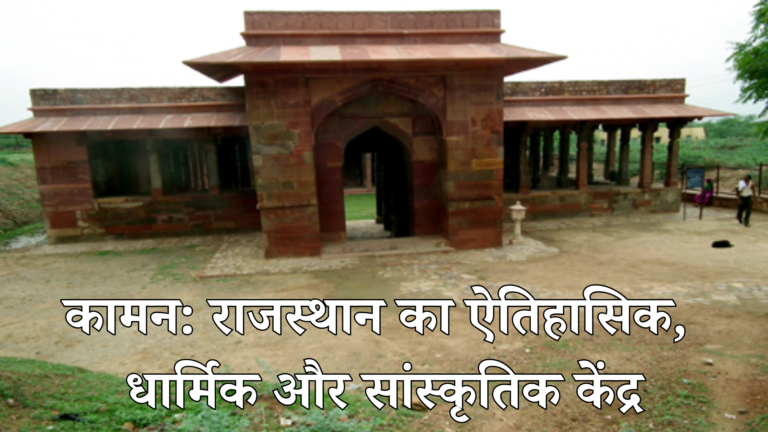पर्यटन सुरक्षा: भारत की विश्वसनीयता और विकास का एक महत्वपूर्ण पहलू
भारत, अपनी समृद्ध सांस्कृतिक विरासत, ऐतिहासिक स्थलों और प्राकृतिक सौंदर्य के कारण विश्वभर के यात्रियों को आकर्षित करता है। लेकिन क्या एक पर्यटक के लिए सुरक्षा की गारंटी दी जा सकती है?
पर्यटन सुरक्षा किसी भी देश के लिए एक महत्वपूर्ण विषय है। एक सुरक्षित और सकारात्मक यात्रा अनुभव न केवल पर्यटकों को बार-बार आने के लिए प्रेरित करता है, बल्कि देश की वैश्विक प्रतिष्ठा और अर्थव्यवस्था को भी सशक्त करता है।
विशेष रूप से भारत जैसे विविधता से भरे देश में, पर्यटन सुरक्षा एक जटिल लेकिन आवश्यक विषय बन जाता है। चाहे वह ऐतिहासिक स्मारक हों, धार्मिक स्थल हों, हिल स्टेशन हों या समुद्र तट—प्रत्येक स्थान पर पर्यटकों की सुरक्षा सुनिश्चित करना आवश्यक है।
भारत में पर्यटन सुरक्षा क्यों महत्वपूर्ण है?
1. भारत की छवि और वैश्विक पर्यटन पर प्रभाव
भारत को दुनिया भर के लोग आध्यात्मिक, सांस्कृतिक और ऐतिहासिक अनुभवों के लिए चुनते हैं। लेकिन यदि सुरक्षा सुनिश्चित नहीं की जाती है, तो भारत की वैश्विक छवि को नुकसान हो सकता है।
कई बार पर्यटकों के साथ छेड़छाड़, चोरी, ठगी, और धोखाधड़ी जैसी घटनाएं सामने आती हैं, जो भारत के पर्यटन उद्योग के लिए हानिकारक हैं। यात्रियों को सुरक्षित अनुभव प्रदान करने से ही भारत विश्व पर्यटन मानचित्र पर अपनी मजबूत पहचान बना सकता है।
2. भारत की अर्थव्यवस्था में पर्यटन का योगदान
पर्यटन भारत की GDP का लगभग 9% योगदान देता है और लाखों लोगों को रोजगार प्रदान करता है। यदि पर्यटक भारत में असुरक्षित महसूस करेंगे, तो वे अन्य देशों में यात्रा करना पसंद करेंगे, जिससे पर्यटन राजस्व में भारी गिरावट आ सकती है।
3. महिलाओं और एकल यात्रियों के लिए सुरक्षित माहौल
भारत में एकल महिला यात्रियों और विदेशी पर्यटकों के लिए सुरक्षा एक गंभीर विषय है। कई घटनाओं के बाद भारत की साख को नुकसान हुआ है, लेकिन सरकार और निजी संस्थान अब सुरक्षा उपायों को सख्ती से लागू कर रहे हैं।
महिला पर्यटकों के लिए सरकार द्वारा “महिला पर्यटन पुलिस,” 1091 हेल्पलाइन, और महिला सुरक्षा ऐप्स जैसी सुविधाएं शुरू की गई हैं, जो सुरक्षित पर्यटन को बढ़ावा देने में मदद कर रही हैं।
4. प्राकृतिक आपदाओं और स्वास्थ्य सुरक्षा का महत्व
भारत एक विशाल भू-भाग वाला देश है, जहां भूकंप, बाढ़, लू, और मानसून संबंधित आपदाएं सामान्य हैं। पर्यटकों के लिए ऐसी परिस्थितियों में सुरक्षा सुनिश्चित करना आवश्यक है।
इसके अलावा, खाद्य सुरक्षा, पेयजल स्वच्छता और महामारी से बचाव भी पर्यटकों की सुरक्षा के लिए महत्वपूर्ण हैं। हाल ही में, COVID-19 महामारी के बाद भारत में पर्यटन स्थलों पर स्वास्थ्य सुरक्षा उपायों को कड़ा किया गया है।
भारत में पर्यटकों की सुरक्षा के लिए चुनौतियाँ
1. सार्वजनिक परिवहन और यातायात सुरक्षा
भारतीय शहरों में यातायात की भीड़ और असुरक्षित परिवहन प्रणाली कभी-कभी पर्यटकों के लिए मुश्किल खड़ी कर देती है। टैक्सी और ऑटो चालकों द्वारा अधिक किराया वसूलने की घटनाएँ आम हैं।
2. साइबर क्राइम और डिजिटल धोखाधड़ी
आजकल पर्यटक ऑनलाइन होटल बुकिंग और ई-वॉलेट का अधिक उपयोग कर रहे हैं। लेकिन कई बार साइबर फ्रॉड का शिकार हो जाते हैं। भारतीय सरकार ने साइबर सुरक्षा को लेकर कड़े नियम बनाए हैं, लेकिन पर्यटकों को भी सतर्क रहने की जरूरत है।
3. स्थानीय अपराध और ठगी की घटनाएँ
कई पर्यटन स्थलों पर फर्जी गाइड, नकली टिकट, या अधिक कीमतों पर सामान बेचने वाले लोग सक्रिय होते हैं। यह पर्यटकों के अनुभव को खराब कर सकता है और भारत की साख को नुकसान पहुँचा सकता है।
4. भाषा अवरोध और जानकारी की कमी
भारत में कई राज्यों में भाषा भिन्नता के कारण विदेशी पर्यटकों को कई बार जानकारी प्राप्त करने में कठिनाई होती है। इससे वे गलत जानकारी या गाइडों के झांसे में आ सकते हैं।
भारत में पर्यटकों की सुरक्षा सुनिश्चित करने के उपाय
1. सरकार द्वारा उठाए गए सुरक्षा कदम
भारत सरकार ने पर्यटन सुरक्षा के लिए कई कदम उठाए हैं, जिनमें शामिल हैं:
- टूरिस्ट हेल्पलाइन नंबर (1363) – 24×7 पर्यटकों की सहायता के लिए।
- महिला पर्यटकों के लिए विशेष हेल्पलाइन (1091)।
- स्मार्ट पुलिसिंग और सीसीटीवी निगरानी प्रमुख पर्यटन स्थलों पर।
- “सुरक्षित पर्यटन अभियान” के तहत होटलों और टैक्सी सेवाओं का सत्यापन।
2. यात्रियों को खुद से बरती जाने वाली सावधानियां
- अज्ञात लोगों से अधिक बातचीत न करें और संदिग्ध ऑफ़र्स से बचें।
- होटल बुकिंग केवल आधिकारिक वेबसाइट या विश्वसनीय पोर्टल्स से करें।
- अपने कीमती सामान और पासपोर्ट को सुरक्षित स्थान पर रखें।
- रात में सुनसान जगहों पर जाने से बचें।
- ऑनलाइन ट्रांजैक्शन के दौरान सतर्क रहें।
3. सामुदायिक भागीदारी और स्थानीय नागरिकों की जिम्मेदारी
स्थानीय लोगों की भागीदारी से पर्यटन सुरक्षा बेहतर की जा सकती है। यदि स्थानीय नागरिक पर्यटकों के साथ अच्छे से पेश आएंगे और धोखाधड़ी करने वालों की जानकारी प्रशासन को देंगे, तो पर्यटन का अनुभव और भी सुरक्षित बनेगा।
4. जागरूकता और डिजिटल समाधान
- भारत सरकार और राज्य सरकारें पर्यटकों के लिए मोबाइल ऐप्स विकसित कर रही हैं जो सुरक्षा संबंधी जानकारी और लाइव हेल्पलाइन सपोर्ट प्रदान करती हैं।
- पर्यटकों को भारतीय कानूनों और स्थानीय प्रथाओं के बारे में जानकारी होनी चाहिए।
सुरक्षित पर्यटन, मजबूत भारत
भारत को “अतिथि देवो भव” की परंपरा के लिए जाना जाता है। एक पर्यटक जब हमारे देश में आता है, तो उसकी सुरक्षा हमारी जिम्मेदारी बन जाती है। यदि भारत सुरक्षित पर्यटन स्थलों की सूची में उच्च स्थान पर आता है, तो यह हमारी अर्थव्यवस्था, वैश्विक प्रतिष्ठा और सांस्कृतिक विरासत को और भी मजबूत बनाएगा।
पर्यटकों की सुरक्षा सिर्फ सरकार की नहीं, बल्कि हर भारतीय नागरिक की जिम्मेदारी भी है। आइए मिलकर एक सुरक्षित, स्वागतयोग्य और पर्यटक-अनुकूल भारत बनाएं!













